GMRC Review: The Stochastic Man by Robert Silverberg
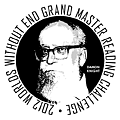 Guest Blogger and WWEnd Member, Charles Dee Mitchell, has contributed a great many book reviews to WWEnd including his blog series Philip K. Dickathon and The Horror! The Horror! He can also be found on his own blog www.potatoweather.blogspot.com. This is Dee’s fourth GMRC review to feature in our blog.
Guest Blogger and WWEnd Member, Charles Dee Mitchell, has contributed a great many book reviews to WWEnd including his blog series Philip K. Dickathon and The Horror! The Horror! He can also be found on his own blog www.potatoweather.blogspot.com. This is Dee’s fourth GMRC review to feature in our blog.
Robert Silverberg considered The Stochastic Man a valedictory offering. When he wrote the novel in the early 1970’s he had already resolved to effect his second retirement from the world of science fiction. His first retirement came around 1958, the year the science fiction magazine world imploded due to over-saturation and the growing market for paperback books. Writer and editor Frederik Pohl brought Silverberg back into the sf fold in the early 1960’s, encouraging him to write more thoughtful material than the pulp-influenced novels and stories he cranked out–and Silverberg would not himself object to that characterization–during the previous decade. But then, by the 1970’s, Silverberg discovered that he was "on the wrong side of a revolution." He joined in with the new crowd of younger writers, J. G. Ballard, Thomas M. Disch, Samuel R. Delany and others, who were producing more literary and experimental fiction. ("Younger" is a relative term here. Silverberg himself was only in his thirties at this time, but he had been publishing since he was nineteen.) This period, from 1965 – 1974, is considered to be Silverberg’s best, but he saw his readership drying up.
"What was fun for the writers, though, turned out to be not so much fun for majority of the readers, who justifiably complained that if they wanted to read Joyce and Kafka they would go and read Joyce and Kafka. They didn’t want their sf to be Joycified or Kafkaized. So they stayed away from the new fiction in droves, and by 1972 the revolution was pretty well over."
Silverberg also cites the pernicious influence of Star Wars and the craze for trilogies on the popular sf market. He considered himself out of the game and simply fulfilling contractual commitments when he wrote The Stochastic Man and Shadrach in the Furnace, published in 1975 and 1976 respectively.
The Stochastic Man may not be the worst title ever given an sf novel, but forty years later it is unappealing, opaque, and dated. Silverberg gives a history and definition of the term in the opening chapter. It comes from logic and mathematics and figures in writing on computer theory. I associate it with the titles of text books and academic monographs filled with symbols and formulas I will never understand. On the practical level, it refers to using sophisticated sampling methods to gather a large enough pool of variables to proceed to an educated guess. Sexy stuff, right? In the 1970’s it must have had buzzword novelty. I ran it through Google’s NGram viewer that tracks a term’s popularity. "Stochastic" makes a steady climb from near total obscurity in 1950 to a high point in 1990 and then, after a period of stasis, there is a decline beginning at the turn of the century. In the 1970’s it was definitely on the rise. Silverberg’s novel takes place in the 1990’s, so when Lew Nichols defines himself as a stochastician, he is using a trendy 1970’s term to describe a profession that sounds very much like what we would call a consultant, no frills attached.
The 1970’s permeates Siverberg’s near future narrative. New York City at the turn of the millennium is the worst case scenario of what New York in the early 1970’s was becoming. With the successful Disneyfication of Times Square and the city’s declining crime rates it is hard to remember that forty years ago New York City was dirty, dangerous, and nearing bankruptcy. Silverberg and his wife were both lifelong New Yorkers, but they had, like many of their friends, decamped for the West Coast by the time he wrote this novel. In Lew Nichol’s New York City, Puerto Rican and Black populations stage pitched battles. Large portions of the city are too dangerous to enter, and those who can afford them travel with protective devices that ward off attackers. The nicest, newest and safest buildings are on Staten Island while the Upper East Side is livable but crumbling. All but the finest restaurants serve artificial food.
But Lew and his wife Sundara, a glamorous woman of Indian origin, live the good life. Lew’s stochastic firm brings in an enviable income, as does Sundara’s art gallery. (Hmm, a wealthy man whose wife runs an art gallery. Silverberg got that one right.) They attend exclusive parties where the elite mingle and choose sexual partners for later in the evening. A variety of legal drugs keep the party going.
"The terrors and traumas of New York City seemed indecently remote as we stood by our long crystalline window, staring into the wintry moonbright night and seeing only our own reflections, tall fairhaired man and slender dark woman, side by side, side by side, allies against the darkness… Actually neither of us found life in the city really burdensome. As members of the affluent minority we were isolated from much of the crazy stuff…"
So what is this novel actually about? Reviewers need not worry about spoilers, since a dozen pages into it Lew Nichols, as first-person narrator, has revealed most of the plot developments. Lew will become a consultant to the political campaign of the charismatic Paul Quinn, the great hope of a city and country seeking to rejuvenate itself, but who Lew describes as "potentially the most dangerous man in the world." He imagines that American voters dream of being able to withdraw the votes that as Lew is telling the story they will not place for another four or five years. And there is the enigmatic character of Martin Carvajal, a milquetoast multimillionaire who goes beyond Lew’s stochastic methods and is able to literally see the future. Lew calls him a "wild card in the flow of time." Carvajal’s resigned, passive nature comes from not only the fact that for him the future and history are one and the same, but he is also aware of the exact moment of his rapidly approaching violent death. He wants to bring Lew on as a pupil in seeing the future, rather than simply making educated guesses about it.
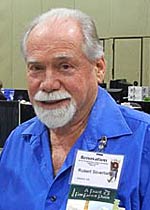 Revealing all in the first chapter of a book sets up a classic suspense structure where readers stay with the story to see how the inevitable works itself out. But Silverberg’s profoundly pessimistic novel is not about keeping you on the edge of your seat. By revealing so much early on, the reader becomes, like Carvajal and increasingly like Lew, one that can only watch inexorable events unspool like the frames of a film. More or less knowing what’s coming makes all the political machinations and messy personal relationships objects of detached interest rather than elements in an engaging plot. The Stochastic Man is a stylistic exercise that is likely to leave many readers cold, but I found it the most interesting though not the best Silverberg novel I have read.
Revealing all in the first chapter of a book sets up a classic suspense structure where readers stay with the story to see how the inevitable works itself out. But Silverberg’s profoundly pessimistic novel is not about keeping you on the edge of your seat. By revealing so much early on, the reader becomes, like Carvajal and increasingly like Lew, one that can only watch inexorable events unspool like the frames of a film. More or less knowing what’s coming makes all the political machinations and messy personal relationships objects of detached interest rather than elements in an engaging plot. The Stochastic Man is a stylistic exercise that is likely to leave many readers cold, but I found it the most interesting though not the best Silverberg novel I have read.
And what is this obsession with knowing the future beyond the ability to choose lottery numbers and hot stocks? Carvajal’s resignation and depression should clue Lew in on the fact that foreknowledge does nothing but make you a passive agent of the inevitable. But like 17th century Puritans struggling with the paradoxes of predestination and free will, Lew cannot let go of his obsession with seeing. (Silverberg italicizes the term throughout the book.) At the end of the novel–and this would be a spoiler except it too is described in the opening chapter–Lew has inherited Carvajal’s millions and used them to set up an institute to develop the talent for second sight in as many people as possible. He still thinks this is a meaningful project. I thought he hadn’t read his own book.
(Biographical information in this review comes from Silverberg’s Other Spaces Other Times.














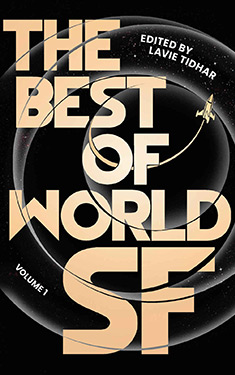
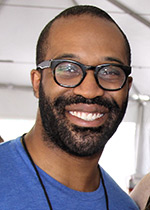


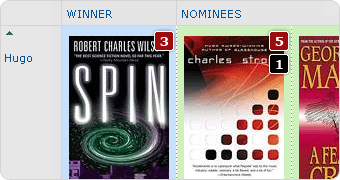
 Full Details
Full Details
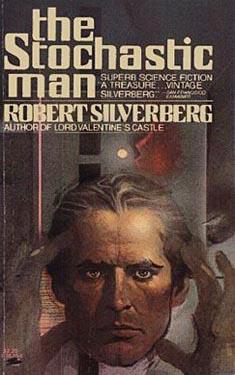


No comments yet.
Sorry, the comment form is closed at this time.